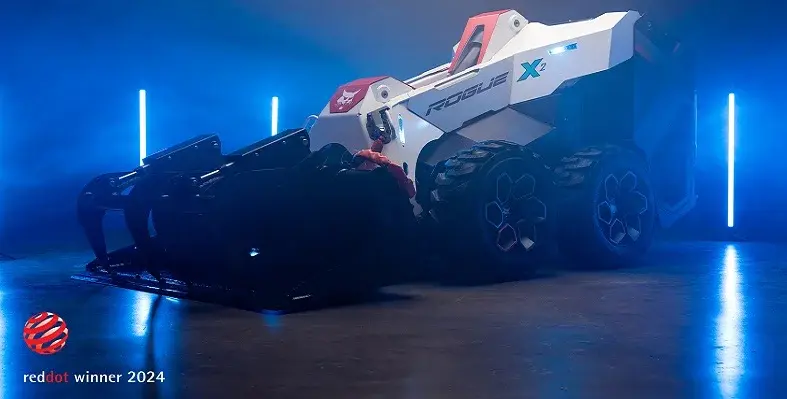Bobcat, a global manufacturer of compact equipment, has received the Red Dot Award: Design Concept winner for RogueX2, an all-electric, fully autonomous concept loader
The Red Dot Design Award is an annual international competition recognising excellence in design and business. Around 20,000 entries are submitted per year, making it one of the biggest design competitions in the world. The Design Concept category is bestowed upon new innovations that are precursors of tomorrow’s great products.
This year, that honour has gone to the RogueX2, a powerful, smart machine from Bobcat that produces zero emissions. Features include a lithium-ion battery, electric drive actuated lift, and tilt kinematics with no hydraulics. The most striking of the solution, however, is the lack of cab. The fully-autonomous concept loader has been designed to work without need of an operator and explores the idea of how work machines of the future can be designed and optimised for new technologies. In this way, it provides a glimpse at an entirely new work experience.
“We are honoured to win the world-renowned Red Dot Award for Design Concept in recognition of the groundbreaking design of the RogueX2,” remarked Joel Honeyman, vice president of global innovation at Doosan Bobcat. “This award is a testament to the dedication of the Bobcat teams who are passionate about pushing design limits and advancing innovation to redefine the machines of tomorrow.
Key to the machine’s development was the Bobcat Global Design Studio, which supported the project in collaboration with the Bobcat Global Innovation team. The solution is currently in the research and development stage, and is not commercially available.
“To build a smarter, more sustainable and connected future, we must ask the questions no one else has thought to ask before and invent new solutions that previously did not exist,” concluded Honeyman.






